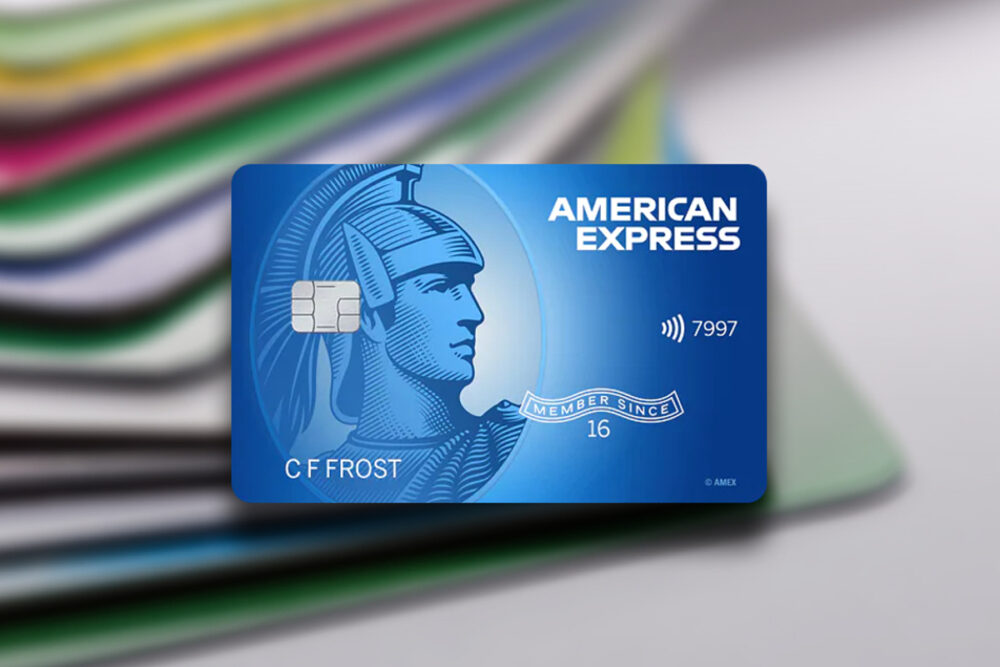Future Trends in Credit Card Use: What to Expect in 2024

Trends Shaping Credit Card Usage in 2024
The landscape of credit card usage is being significantly transformed by advancements in technology and shifts in consumer behavior. As we delve into 2024, several key trends are expected to reshape how consumers interact with credit cards. Recognizing these trends is vital for both consumers and businesses aiming to stay ahead in a competitive marketplace.
Increased Adoption of Contactless Payments
One of the most prominent trends is the increased adoption of contactless payments. The convenience of tap-to-pay options has gained remarkable traction, driven by the need for quick and efficient transactions. According to recent studies, a substantial portion of consumers prefer contactless payments for their speed and ease, allowing them to make transactions without needing to swipe or insert a card. Major retailers and restaurants across the United States are increasingly equipping their Point-of-Sale (POS) systems to support this technology, making it a mainstream payment method.
Integration of Artificial Intelligence
The integration of artificial intelligence into credit card services is poised to revolutionize user experiences. AI technology will enhance fraud detection capabilities, enabling financial institutions to identify and mitigate fraudulent activities in real time. Additionally, AI algorithms can analyze spending patterns to provide personalized spending recommendations. This could lead to tailored offers and incentives that reflect individual consumer behaviors, ultimately enhancing customer satisfaction and loyalty.
Enhanced Security Features
In an era where data breaches are increasingly common, enhanced security features are becoming paramount. Innovations such as biometric authentication—using fingerprints or facial recognition—offer an added layer of security during transactions. Furthermore, the adoption of tokenization will protect consumers’ sensitive information by replacing card details with unique identifiers, minimizing the risk of data theft during online and physical transactions.
Focus on Sustainability
As environmental awareness grows among consumers, there is a noticeable focus on sustainability within the credit card industry. Eco-friendly credit cards, often made from recycled materials or designed to reduce plastic waste, are gaining popularity. Financial institutions are responding to this trend by offering rewards that are oriented toward sustainable practices, such as bonuses for purchases made at environmentally friendly retailers.
Growth of Rewards Programs
To compete in this dynamic environment, credit card issuers are expected to expand their rewards programs. These enhancements may include higher cash-back rates, travel perks, and exclusive deals for loyal customers. The increased competition among financial services firms to capture market share will likely lead to more attractive offers for consumers, encouraging strategic use of credit cards that align with personal spending habits.
These trends indicate a significant shift toward more secure, convenient, and personalized credit card experiences. Stakeholders in the financial sector must adapt to these changes to meet evolving consumer expectations. By remaining informed of these developments, consumers can make better financial decisions and leverage emerging opportunities in the marketplace.
DISCOVER MORE: Click here for essential tips
Emerging Developments in Financial Technology
As we head into 2024, the rapid evolution of financial technology is set to significantly influence credit card usage patterns. The integration of innovative tools and platforms is transforming not just how transactions are conducted, but also how consumers perceive and utilize credit cards. Understanding these upcoming trends provides critical insight for both consumers and businesses aiming to navigate the shifting landscape.
Expansion of Mobile Wallets
The expansion of mobile wallets is an important trend that has gained momentum and is critical for consumers in 2024. Platforms such as Apple Pay, Google Pay, and Samsung Pay offer seamless integration of credit cards with smartphones, providing users with the ability to store multiple cards securely in one digital wallet. This convenience not only reduces the need to carry physical cards but also facilitates instant transactions at various points of sale. The continued rise of mobile wallets is expected to transform traditional payment methods, as more merchants adapt to accept these forms of payment.
Personal Finance Management Tools
Another trend to watch is the integration of personal finance management tools with credit card accounts. As consumers become more financially savvy, there is a growing demand for tools that help track spending, manage budgets, and set financial goals. Credit card issuers are recognizing this need and are likely to incorporate features within their mobile applications or online platforms that offer real-time insights into spending habits. This could empower consumers to make informed decisions, ultimately improving their credit management.
Emergence of Cryptocurrency Credit Cards
The emergence of cryptocurrency credit cards is an innovative trend reflecting the increasing acceptance of digital currencies. These cards allow users to spend their cryptocurrency directly at merchants that accept traditional payments. As cryptocurrency continues to gain legitimacy and mainstream traction, financial institutions are likely to launch more products catering to this market segment. This development could open new avenues for transactions and investment, highlighting the intersection of traditional finance and digital assets.
Key Trends to Monitor
As the credit card landscape evolves, it is essential to monitor several key trends that are likely to emerge throughout 2024:
- Increased use of financial wellness resources—credit card providers may enhance their offerings of resources that promote financial literacy.
- Greater emphasis on customer experiences—issuers may innovate ways to enhance user engagement and satisfaction through customized services.
- Focus on cross-border transactions—as global commerce grows, there will be improvements in credit card usability for international purchases.
In summary, the convergence of technology and changing consumer expectations is setting the stage for a transformative year in credit card usage. By recognizing these trends, stakeholders can better prepare for the future, ensuring alignment with consumer preferences while seizing new opportunities in the marketplace.
LEARN MORE: Click here to delve deeper
Changes in Regulatory Perspectives
The landscape of credit card usage in 2024 will undoubtedly be shaped by changes in regulatory perspectives. With an increasing focus on consumer protection and technological advancements, regulatory bodies such as the Consumer Financial Protection Bureau (CFPB) are poised to implement new guidelines. These regulations will likely address issues such as transparency in fee structures, interest rates, and disclosures, aiming to enhance consumer trust and understanding of credit card terms. This push for regulation may compel credit card issuers to revise their practices, ultimately leading to more favorable conditions for consumers.
Enhanced Security Measures
In response to growing concerns about data breaches and identity theft, the implementation of enhanced security measures within credit card transactions will be paramount in 2024. Innovations such as biometric authentication, real-time fraud detection algorithms, and the utilization of artificial intelligence are expected to become standard practices. By employing these technologies, credit card companies can provide a more secure transaction environment that minimizes the risk of fraud while also bolstering consumer confidence.
Reward Programs and Loyalty Incentives
Consumer preferences are shifting towards personalized experiences, which has a direct impact on credit card reward programs and loyalty incentives. In 2024, we can anticipate credit card issuers to develop more tailored reward systems that cater to individual spending habits. This could include greater flexibility in redeeming points, partnerships with a wider array of retail brands, or even dynamic rewards that adjust to consumer preferences in real-time. As competition escalates among financial institutions, enhancing incentive structures may serve as a key differentiator in attracting and retaining cardholders.
Sustainability Initiatives
As environmental consciousness rises among consumers, credit card companies are responding by introducing sustainability initiatives. In 2024, there will likely be a heightened emphasis on eco-friendly credit cards manufactured from recycled materials, as well as reward systems that incentivize sustainable spending behaviors. For example, cardholders might earn increased points for purchases made at environmentally friendly retailers or for philanthropic donations to conservation efforts. Such initiatives not only align with consumer values but also build brand loyalty through corporate social responsibility.
Integration of Augmented Reality (AR) in Shopping Experiences
As technology continues to advance, the integration of augmented reality (AR) in shopping experiences is another trend anticipated for 2024. Credit card companies and retail partners may collaborate to utilize AR technologies that allow consumers to visualize products in real-time before making a purchase. For instance, users could point their smartphones at a space in their homes to see how furniture would look in that environment. This experiential approach can lead to enhanced decision-making, translating to higher satisfaction and a lower likelihood of returns while solidifying the role of credit cards in everyday purchasing.
The interplay of these developing trends illustrates a dynamic shift in the credit card landscape as we approach 2024. By recognizing the impact of regulatory changes, technological advancements, and evolving consumer preferences, stakeholders can position themselves strategically within this changing environment.
DIVE DEEPER: Click here to learn how to apply
Conclusion
As we look toward 2024, the landscape of credit card usage is poised for significant transformations driven by a multitude of factors. From enhanced security measures and personalized reward programs to the emergence of sustainability initiatives, consumers can expect a more tailored and secure credit card experience. Enhanced security features, such as biometric authentication and advanced encryption technologies, will be implemented to safeguard personal information. For instance, the adoption of facial recognition or fingerprint scanning for transactions can reduce fraud and enhance user confidence in using their credit cards both online and in-store.
Moreover, personalized reward programs will attract a diverse consumer base by allowing cardholders to customize rewards according to their spending habits. For example, a frequent traveler may benefit from a credit card that offers enhanced points for airline purchases, hotel stays, and travel-related expenses, while a grocery shopper may prefer a card that provides cash back for supermarket purchases. This customization creates a more engaging experience for consumers, encouraging them to interact with their credit cards more frequently and meaningfully.
The incorporation of cutting-edge technologies, such as augmented reality in shopping, will also redefine how transactions occur. Augmented reality applications can allow consumers to visualize products in their homes before making a purchase, thereby empowering them to make informed decisions. This will enhance overall satisfaction, as consumers will feel more confident about their purchases when they can see how items fit into their personal spaces.
Furthermore, the anticipated changes in regulatory perspectives will likely foster a more transparent credit environment, where consumer protection is prioritized. Regulatory bodies are expected to enforce stricter guidelines that promote clear disclosure of fees and terms associated with credit cards. As financial institutions adapt to these evolving standards, they will be compelled to improve product offerings that are not only competitive but also focused on the values of today’s conscientious consumers, such as ethical lending practices and sustainability.
In this rapidly changing context, stakeholders must remain vigilant and adaptable. Credit card issuers, retailers, and regulatory bodies alike should collaborate to harness these trends, ensuring safety, satisfaction, and sustainability become integral to the credit landscape. By prioritizing communication and transparency, they can build trust with consumers, thereby fostering long-term relationships. Ultimately, by embracing these advancements, the credit card industry can cultivate lasting relationships with consumers, setting the stage for a prosperous future that aligns with consumer values and enhances their financial well-being.









